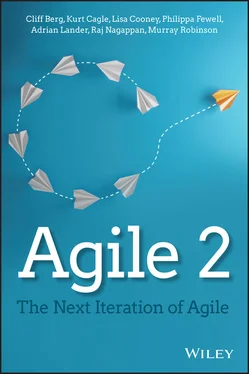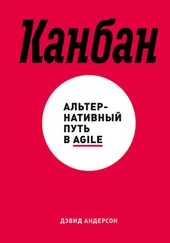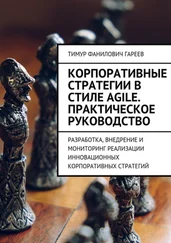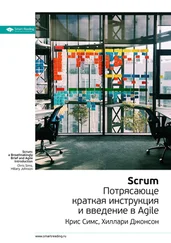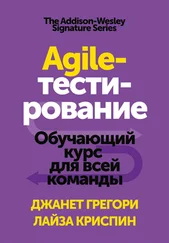1 ...6 7 8 10 11 12 ...22 Perhaps do not assume that the team should be texting each other all day in these tools. Perhaps encourage them to disable desktop notifications and to not install the tool on their phones.
Maybe some people are bothered by these tools and by ambient noise, but others are not. Ask! Consider this post in Slashdot, “Why Office Noise Bothers Some People More Than Others”:
“According to a 2015 survey of the most annoying office noises by Avanta Serviced Office Group, conversations were rated the most vexing, closely followed by coughing, sneezing and sniffing, loud phone voices, ringing phones and whistling. Why do we find it so hard to be around these everyday noises? … As the researchers suspected, all the students performed better in silence. But they also found that … the more extroverted they were, the less they were affected by noise.”28
Maybe some team members can work just fine in a team room, but others cannot. Do not assume that a team vote is the answer. Maybe a range of approaches should be considered. Ask!
Noise and pop-up alerts are not the only problem. Some people also find local movement distracting. That is why Panasonic has developed “horse blinders” for humans, specifically for use in open office layouts ( Figure 1.1). 29

Figure 1.1: Blinders to help people focus in “team rooms”
Source: (Photo from Japan Trends:)
www.japantrends.com/wear-space-panasonic-wearable-concentration/)
Are frequent “stopping by” discussions disruptive? For some people, yes. According to a study at George Mason University, being interrupted for only 60 seconds while concentrating can completely wipe one's short-term memory. 30
Perhaps do not advise your team to just “stop by” each other's desk at any time. Perhaps people should have an “I'm thinking” sign on their desk, indicating that they do not want to be disturbed.
What about all the Agile ceremonies? Many developers think it is too much. 31 Perhaps instead of assuming that the team needs those, ask! According to an article in Doist.com,
“This trend toward near-constant communication means that the average knowledge worker must organize their workday around multiple meetings, with the time in between spent doing their work half-distractedly with one eye on email and Slack.”32
Talk to teams. Find out how they feel that they work best. Do not assume. Do not blindly follow someone else's methods.
We can see that while there are some really powerful and important ideas behind the Agile movement, things are not quite right. What should we do?
Agile 2 is not intended to be a new set of ideas. The ideas of Agile 2 are all well-established, but they are not Agile doctrine. Many members of the Agile community have been using these ideas on an individual basis but usually describe these as implied nuances, or “bringing in ideas from other domains.” These ideas pertain to leadership, to effective collaboration, to empowering people to work in a way that is best for them individually, and to applying context and judgment instead of just adopting an extreme practice. Agile 2 is about bringing these nuances explicitly into the Agile idea set and making them part of the Agile envelope.
In the next chapter, we will take a more comprehensive look at some problems of Agile to establish a better understanding of what areas of Agile need improvement. In later chapters, we will then look at models for effective leadership, collaboration, product design, transformation, continuous delivery, and other ideas that are part of Agile 2, and we will conclude with examples of some specific problem domains through an Agile 2 lens.
1 1. www.youtube.com/watch?v=a-BOSpxYJ9M
2 2. ronjeffries.com/articles/018-01ff/abandon-1/
3 3. www.forbes.com/sites/cognitiveworld/2019/08/23/the-end-of-agile/
4 4. developers.slashdot.org/story/19/08/24/1748246/is-agile-becoming-less-and-less-relevant
5 5. goremotely.net/blog/agile-adoption/
6 6. www.extremeprogramming.org/
7 7. www.oreilly.com/library/view/making-software/9780596808310/ch17s01.html
8 8. en.wikipedia.org/wiki/Scrum_%28software_development%29#History
9 9. www.scrumguides.org/scrum-guide.html#team-dev
10 10. www.agilealliance.org/glossary/mob-programming/
11 11. www.fastcompany.com/3044389/a-first-look-at-facebooks-new-mothership-designed-by-frank-gehry
12 12. The larger racquets were not welcomed by many tennis enthusiasts, because the larger racquets encouraged sloppy strokes, and they also produced a faster serve, shifting the focus of the game to one's serve.
13 13. explore.digital.ai/state-of-agile/6th-annual-state-of-agile-report
14 14. www.youtube.com/watch?v=G_y2pNj0zZg&feature=youtu.be
15 15. www.reddit.com/r/devops/comments/i4cbwu/i_hate_scrum/
16 16. www.slideshare.net/jcasal1/20120419-agile-businessconferencepptx, slide 11.
17 17. psyche.co/ideas/introverts-are-excluded-unfairly-in-an-extraverts-world
18 18. www.infoq.com/news/2013/02/Introverted-Intuitive-Logical/
19 19. ir.lib.uwo.ca/cgi/viewcontent.cgi?article=1005&context=electricalpub
20 20. psycnet.apa.org/record/2011-15936-006
21 21. www.researchgate.net/figure/14-Effectiveness-of-different-modes-of-communication_fig8_27296733
22 22. The Scrum authors refer to it as a framework, but Scrum perfectly fits the definition of methodology as a “body of methods, rules, and postulates employed by a discipline” (Merriam-Webster). A methodology can be extended, just as a framework can.
23 23. www.eurekalert.org/pub_releases/2014-12/osu-ics121614.php
24 24. ir.lib.uwo.ca/cgi/viewcontent.cgi?article=1005&context=electricalpub
25 25. www.inc.com/glenn-leibowitz/yale-psychologists-introverts-are-better-than-extroverts-at-performing-this-essential-leadership-skill.html
26 26. expand.openviewpartners.com/former-slack-cmo-bill-macaitis-on-how-slack-uses-slack-868ffb495b71
27 27. www.nirandfar.com/slack-use/
28 28. slashdot.org/story/363608
29 29. techcrunch.com/2018/10/17/open-offices-have-driven-panasonic-to-make-horse-blinders-for-humans/
30 30. www.dailymail.co.uk/sciencetech/article-2697466/Do-not-disturb-Being-interrupted-just-60-seconds-concentrating-completely-wipe-short-term-memory.html
31 31. medium.com/serious-scrum/time-spent-in-scrum-meetings-75e38b08d8
32 32. blog.doist.com/asynchronous-communication/
The first thing that the Agile 2 team did was discuss the state of Agile today; in other words, we conducted a kind of retrospective. We are a global team of 15, spanning time zones from California to Vietnam, so we could not assemble in person or even remotely at the same time. We had to find another way. We had one-on-one discussions, which were documented and shared in written form, and then we collaborated to develop a set of “key ideas,” which were ideas expressed by at least two Agile 2 team members. Many of these key ideas were problems with the state of Agile. Others were insights: realizations about why something did not work or what is needed to make things work better.
Let's look at some of the problems that we found with Agile today and at some insights about them.
Leadership Is Complex, Nuanced, Multifaceted, and Necessary
In the Agile community, the term leadership in the context of a team is often thought of in terms of the Scrum Master role, which is defined by the Scrum framework. There is also the Scrum Product Owner, who provides leadership with regard to the product vision and its feature set; and Scrum team members are expected to apply individual leadership when collaborating and organizing their collective work. Let's consider the Scrum Master role, which is the primary leadership role defined by Scrum pertaining to the work process of a development team.
Читать дальше
